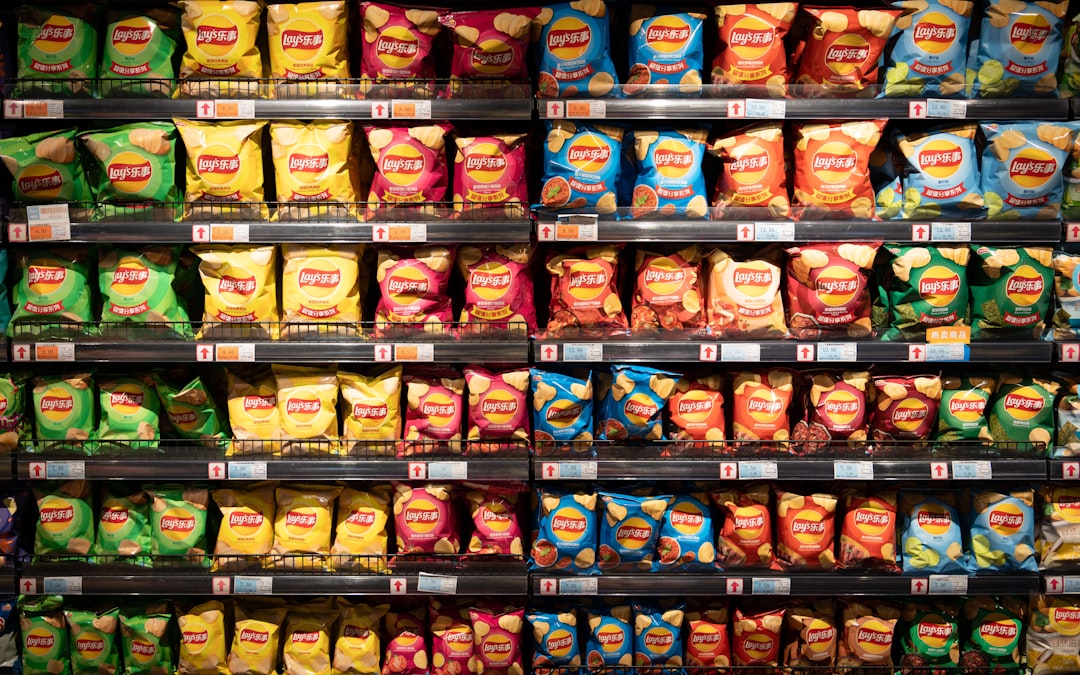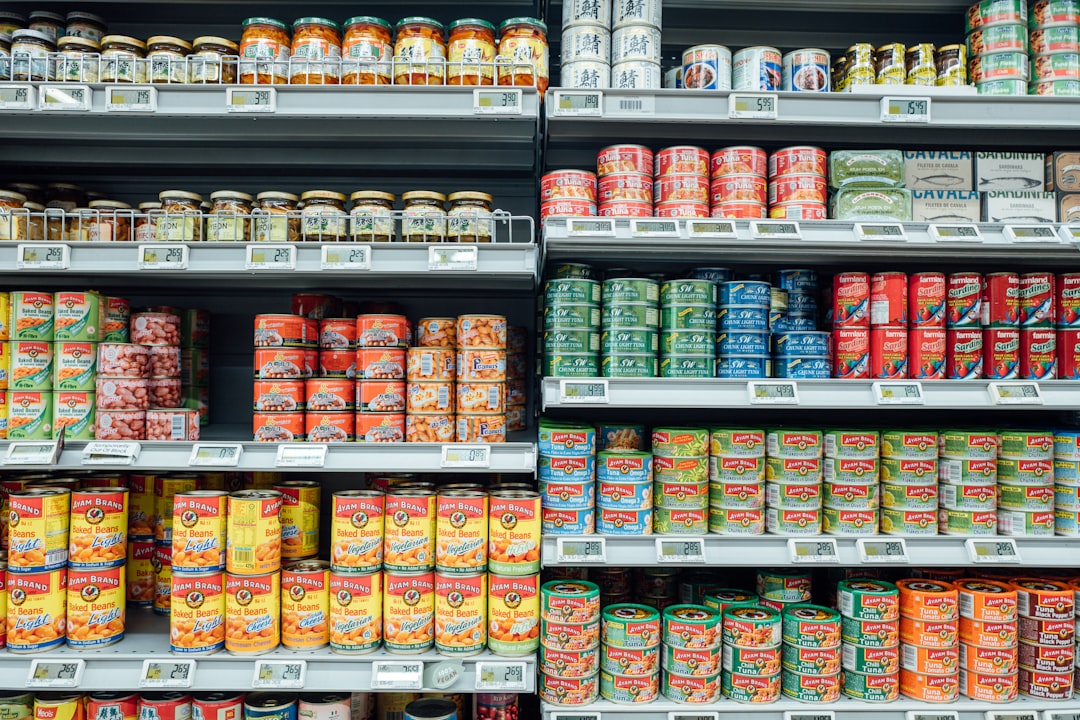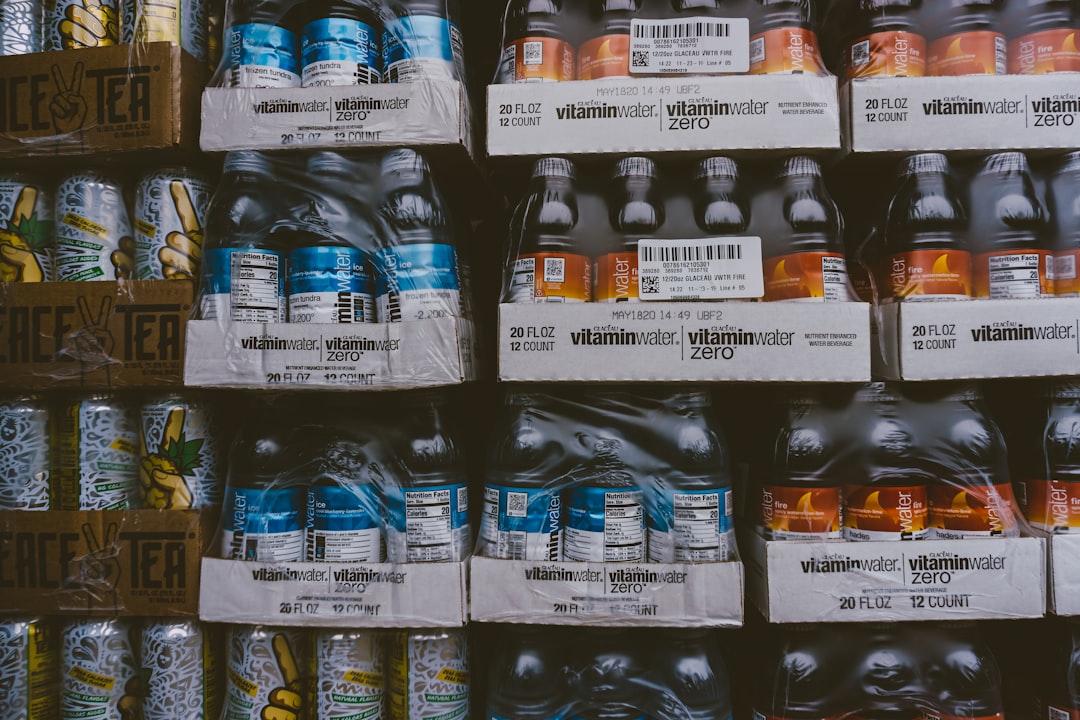

Engage prospects with a scan and streamline customer engagement with FREE QR code marketing tools by Sona – no strings attached!
Create a Free QR CodeFree consultation

No commitment

Engage prospects with a scan and streamline customer engagement with FREE QR code marketing tools by Sona – no strings attached!
Create a Free QR CodeFree consultation

No commitment
In today’s digitally connected world, food packaging companies face mounting pressure to engage consumers, ensure regulatory compliance, and maintain transparency while adapting to the complexities of sustainability and market volatility. Yet many fall short of maximizing high-value prospects when potential leads interact with packaging but are neither tracked nor engaged. The result is missed opportunities to build relationships, prompt follow-up, and improve the customer experience at the moment of interest.
QR codes now serve as a pivotal bridge from physical products to targeted digital experiences. They enable the identification of previously anonymous customers and allow brands to meet evolving consumer demands for instant information access and product validation. With dynamic content, analytics, and integrations, teams can capture intent signals, trigger relevant actions, and adapt quickly when regulations or market realities change.
Seamlessly integrating QR codes into product packaging turns each item into an interactive channel. This positions food packaging companies to overcome challenges like incomplete account data, inconsistent messaging, and lack of lead attribution. When implemented with the right workflows, QR codes build consumer trust, streamline compliance for food safety and traceability, and surface insights that unlock upsell and cross-sell moments. Modern QR strategies connect sustainability goals and compliance needs to measurable marketing outcomes, creating a practical path to data-driven growth.

Many food packaging companies struggle to nurture high-value leads because prospects researching products do not fill out forms or reveal their identity. Packaging often gets the first interaction, but without a clear path to digital engagement, that interest fades. QR codes bridge this gap by transforming packaging into a measurable digital touchpoint. Each scan captures engagement data, attributes interactions, and ties anonymous moments to known profiles as users submit forms, authenticate products, or opt in to content.
To move from static to smart packaging, focus on replacing outdated analog processes with agile QR experiences. Instead of printing long instruction booklets, allergen inserts, or warranty cards that quickly become outdated, provide a single scannable code that links to a live resource hub. Use QR codes to trigger specific actions such as product registration, review submission, or recall alerts. With dynamic QR and a platform like Sona QR, you can update content after printing, segment scans by SKU or channel, and push data to your CRM to inform sales and marketing.
Innovative tools now manage the entire process from code creation to analytics and automated workflows. This helps companies overcome segmentation gaps and reliably connect with decision-makers while ensuring that consumer-facing messaging remains accurate, consistent, and compliant. Start creating QR codes for free.

Packaging is often the first and only chance to capture buyer intent, especially at retail. Without QR codes, brands have little clarity about who interacts with their products, what questions they have, or which claims resonate. QR codes address this foundational challenge by connecting offline moments to digital journeys, improving speed to information, and providing a data layer that traditional print cannot offer. For implementation, see this food packaging guide.
In an industry where regulations shift, supply chains are scrutinized, and sustainability claims require evidence, QR codes create a flexible, measurable way to communicate at scale. They reduce the cost of reprints, allow for content updates post-production, and ensure that consumers, retailers, and regulators can quickly access the latest information.
For example, a packaging team operating in a highly regulated category can centralize documentation behind a single QR that varies by lot number. Customers and inspectors see precisely what they need. Meanwhile, marketing teams use aggregated scan data to refine messaging, test offers, and meet consumers with content tailored to their interests.

Despite growing adoption, many brands limit QR codes to basic web links. Packaging teams can unlock more value by selecting formats that match each goal, from authenticity and compliance to engagement and support. Selecting the right format and destination reduces friction and increases conversion.
Dynamic codes are ideal when you need post-print flexibility, granular tracking, or personalization by region, language, or SKU. Static codes can be used for evergreen content such as a long-lived brand story or basic recycling guidance. In practice, most food packaging organizations adopt a hybrid approach based on lifecycle stage, regulatory exposure, and audience needs.
With a platform like Sona QR, teams can create all of these formats, edit dynamic destinations after printing, and capture analytics in a single dashboard that syncs with CRM and analytics tools.
One size fits all strategies dilute the impact of QR initiatives. Instead of placing the same code everywhere, align QR deployments to consumer context, packaging type, and business goal. This creates clarity for the shopper and gives your team high-resolution data for optimization. For sector-specific ideas, explore Sona QR’s CPG strategies.
Focus on placements where a scan is natural and beneficial. In the aisle, shoppers need proof points and guidance for quick decisions. Post-purchase, owners want support, recipes, or reordering options. In B2B workflows, operators and buyers want compliance documents, spec sheets, and direct lines to sales or support.
By matching QR experiences to the moment, you improve scan rates, capture richer intent signals, and avoid clutter that confuses shoppers or overwhelms partners.

QR codes shine when they map to clear outcomes. In food packaging, three areas consistently deliver value: traceability and compliance, consumer engagement, and sustainability communication. Each ties real-world needs to measurable digital actions that improve both customer experience and business performance.
Strong execution starts with the right content destinations and clear CTAs. For example, a traceability QR could open to a lot-specific page with time-stamped audit data, while an engagement QR could reveal a seasonal recipe library with a loyalty sign-up option. For evidence, see peer-reviewed research.
Each use case addresses persistent pain points such as missed lead capture, stagnant data, and inconsistent messaging. Over time, the scan data forms a feedback loop that informs product development, packaging design, and marketing strategies.
Food packaging firms often lack a structured way to connect package engagement to future campaigns. Every scan is a signal that can form the basis of audience segments, especially when each SKU, channel, or campaign uses a unique, trackable QR code. By instrumenting touchpoints, you can build remarketing audiences based on real behavior rather than assumptions.
Use your QR deployment to distinguish between buyer types and intent signals. For example, consumers scanning on a new product trial pack might be open to coupons, while foodservice buyers scanning a bulk carton likely need spec sheets and reorder options. Dynamic QR codes, combined with UTM parameters and CRM integrations, make this segmentation durable and actionable. Learn more in Sona’s offline attribution guide.
With modern platforms like Sona QR, scan events and subsequent actions can sync directly to Salesforce, HubSpot, or marketing automation tools. This ensures your highest-value leads receive timely, relevant follow-up rather than getting lost in anonymous traffic.
Disconnected campaigns and inconsistent messaging erode effectiveness. QR codes should be managed as part of a unified marketing stack, not as isolated print elements. Centralization ensures that scans from packaging, retail signage, mailers, and events roll up into a single dataset that supports attribution, optimization, and budget decisions. See Sona’s multi-touch models.
Food packaging companies can use QR codes to bridge the aisle and the inbox, the store and the CRM. When each code carries context about placement and purpose, you can map scans to funnel stages, trigger automations, and quantify the impact of offline materials.
With a platform such as Sona QR, you can manage all codes, monitor performance, and sync data to your CRM and ad platforms for consistent messaging and dependable attribution.
Food packaging teams risk missed opportunities and regulatory headaches without a clear process for execution. This checklist provides a structured approach that safeguards scannability, data quality, and downstream attribution. It also ensures that codes are relevant to the consumer’s context and update gracefully as content evolves.
Before launching, align on goals and measurement. Ensure the cross-functional team, including packaging, marketing, legal, and retail partners, understands the QR experience and can promote it accurately. Then follow the steps below.
Clarify what success looks like. Decide whether your primary objective is compliance visibility, consumer engagement, or B2B enablement. Choose a single, high-impact use case per code to keep the experience clean and understandable.
Select static or dynamic based on the level of flexibility and measurement you need. In regulated environments, dynamic is often the safer choice because content can be updated without reprinting.
Visual clarity and user experience drive scan rates. Design with strong contrast, sufficient size, and a clear CTA. Test relentlessly in real-world conditions.
Place codes where scanning is natural and beneficial. Match placement to behavior and environment, then train partners to encourage scanning.
Analytics convert scans into insights. Use dynamic codes to monitor performance and refine your approach continuously.
Packaging investments cannot be managed effectively without measurement. Traditional print cannot reveal who engaged or how that engagement influenced revenue. QR codes change this by capturing data at the moment of interest and tying it to downstream actions, from form fills to reorders.
A robust analytics practice looks beyond raw scan counts. It connects scan context to business outcomes and informs the next best action. This requires a platform that unifies scan data with CRM, website analytics, and ad platforms. Sona QR and Sona.com work together to capture real-world engagement, enrich profiles, and attribute revenue. For attribution structure, review Sona’s multi-touch models.
This holistic approach converts each scan into revenue intelligence. It reveals growth opportunities that generic analytics miss and helps justify packaging investments with clear, data-backed results.
As QR programs scale, gaps tend to appear in segmentation, execution, and tracking across multi-SKU lines. Simple operational upgrades can prevent confusion, improve data quality, and increase ROI. Focus on standardizing how codes are created, labeled, and integrated into your tech stack. For packaging execution ideas, see these packaging marketing tips.
Consistency is essential. Create a QR governance playbook covering code types, naming conventions, UTM standards, approved CTAs, and placement rules by packaging type. Train both internal teams and retail partners on promotion and support to ensure that every code delivers value.
Creative deployment examples include QR-enabled loyalty cards on multipacks that unlock seasonal recipes and points, and QR codes on invoices for foodservice clients that route directly to reorder forms or support chat.

Across the industry, packaging innovators are using QR codes to solve real challenges. These examples illustrate how thoughtful execution transforms packaging into a digital gateway that serves both consumers and the business.
A regional dairy brand added QR-enabled packaging that let consumers trace products from farm to shelf and see verified carbon impact. Beyond increased transparency scores, the brand tracked a rise in repeat purchases in regions where sustainability messaging mattered most, using scan analytics to fine-tune local promotions.
These examples show how QR initiatives can be both consumer-friendly and operationally transformative. The key is aligning the digital action with the moment the user scans. Explore Sona QR’s product packaging use case for more ideas.
Industry experts note that missed prospects and weak engagement often stem from preventable issues such as poor code placement, confusing CTAs, and fragmented tracking. A few practical habits can prevent the most common problems and ensure a reliable flow of insights back to the business.
Start by standardizing scannability and messaging. Place codes where the user can hold their phone comfortably. Avoid low-contrast backgrounds and curved surfaces that distort small codes. Keep the CTA short and benefit-focused. Maintain a testing checklist to catch issues before mass production.
For food packaging companies, QR codes are now a strategic lever. They surface high-intent prospects once lost in anonymous traffic, connect packaging investments to measurable results, and replace fragmented experiences with consistent, data-informed journeys. By integrating dynamic QR, analytics, and CRM workflows, brands turn every product into a data-rich touchpoint that supports compliance, sustainability, and stronger consumer relationships.
QR codes have transformed food packaging companies from simple product protectors into powerful interactive marketing platforms. By integrating QR codes, brands can enhance customer engagement, provide instant access to product information, and build stronger consumer trust—all while gathering valuable data to refine their strategies. Imagine knowing exactly which packaging designs drive repeat purchases and loyalty, and adapting your campaigns instantly without the need for costly reprints.
With Sona QR, food packaging companies gain the ability to create dynamic, trackable QR codes that update in real time, connecting every scan to customer insights and revenue streams. This means smarter packaging that not only protects but actively promotes and sells. Start for free with Sona QR today and turn your packaging into a dynamic channel for growth and customer connection.
QR codes streamline compliance by providing instant access to updated regulatory information, batch-level traceability, recall alerts, and audit data, reducing risk and expediting responses.
QR codes enhance consumer engagement, enable real-time content updates, improve traceability, capture valuable analytics, support sustainability claims, and connect packaging to digital marketing and CRM systems.
By offering instant access to authentic product information, allergen details, and sustainability certifications, QR codes provide transparency and accurate data that build consumer confidence.
Creative uses include linking to recipe contests, loyalty programs, traceability stories, social media challenges, reorder forms for B2B clients, and digital portfolios at trade shows.
QR codes connect each package to lot-specific supply chain data, enabling real-time access to batch information, delivery verification, and compliance documents for distributors and regulators.
Use Sona QR's trackable codes to improve customer acquisition and engagement today.
Create Your FREE Trackable QR Code in SecondsJoin results-focused teams combining Sona Platform automation with advanced Google Ads strategies to scale lead generation

Connect your existing CRM

Free Account Enrichment

No setup fees
No commitment required

Free consultation

Get a custom Google Ads roadmap for your business






Launch campaigns that generate qualified leads in 30 days or less.
